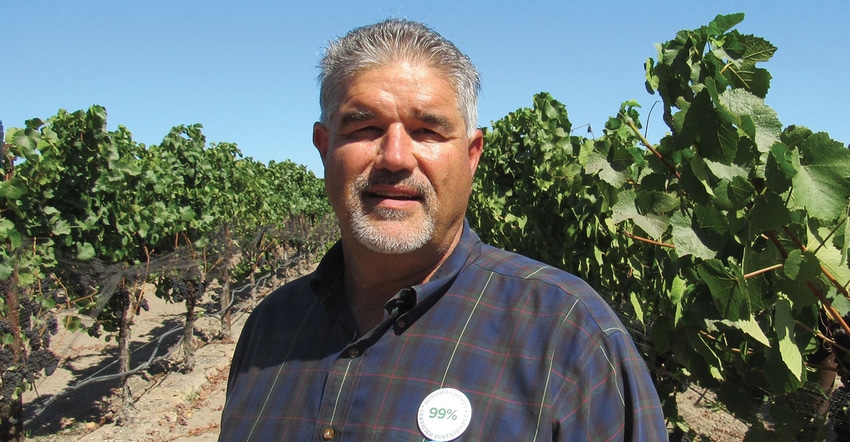
Because of the pandemic, wildfires, and a lighter-than- anticipated grape harvest, California grape and bulk markets have entered into a more balanced short position with buyers throughout the state, industry representatives say.
And while wine grapes are Oregon’s No. 1 fruit crop with 1,300 growers producing significant growth, COVID-19 combined with wildfires and government policy decisions there to exert severe downward pressure on the industry’s momentum.
Both points were made at the time the National Agricultural Statistics Service released its 2020 Preliminary Grape Crush Report showing California’s statewide wine grape crop to be 3.4 million tons -- the lightest such crop since 2011. The crop was down 13% from 2019.
All regions reflected a decrease from 8% in the Southern Interior to 12% in Northern Interior, 17% in the Central Coast area, and a big hit of 31% in North Coast.
The Sonoma County Winegrowers E-News report showed the crush district of Sonoma and Marin Counties experienced an average tonnage harvest of 147,211 tons which was a decrease of nearly 36% from 2019’s harvest tonnage (resulting in a 45.6% decrease in average price per ton).
Decreases in tonnage were across the board in varieties with Merlot taking the biggest blow (-54.8%) followed by Zinfandel (44.3%); Pinot Noir (39.0%); Chardonnay (33.8%); Cabernet Sauvignon (31.5%), and Sauvignon Blanc (22.8%).
The experts at Ciatti Company in Novato, the world’s largest bulk wine and grape brokerage, analyzed the NASS numbers and offered the following insights.
“Harvest was much smaller than average with tons down because of both Mother Nature’s lighter yields and issues of smoke exposure where an unknown amount of crop didn’t get picked. This may be the most challenging crush report to analyze,” said Glenn Proctor, a wine grape farmer and partner in the company. “Trying to discern how each of these issues affected the final tons that crossed scales is a question that will drive future discussions in the marketplace.
“Pricing was down across the board, mostly because of a sluggish-to-nonexistent Coastal spot grape market early on and lower pricing during a secondary Coastal market that emerged where prices were discounted after the fires hit,” he said.
“We do know that prices are back closer to balance than we’ve seen in recent memory and that has spurred early grape buying activity in the Central Valley for all major varietals and early grape-buying discussions in the Coastal regions.”
Cabernet Sauvignon down
The biggest surprise in the report dealt with the severity of the downturn in statewide Cabernet Sauvignon pricing, especially in the San Joaquin Valley impacted by wildfires. “A higher percentage of Cabernet Sauvignon grapes were either unpicked or re-sold at discount in areas perceived to be most affected by smoke, a combination that seems to have pushed Cabernet grape pricing down further than anticipated,” Proctor said.
In the Oregon Wine Board report, published every three years, researchers noted the wine industry broke the $200 million mark only two years ago and increased by 14% in 2019 to $237.88 million before the events of 2020 arrived.
“The year was one of large challenges,” wrote Robert Eyler, president of Economic Forensics and Analytics. “The consolidated effects of COVID, fires, and smoke in 2020 reduced the industry’s economic impact by an estimated 20.5%. The impact of wildfire smoke on that year’s wine is not yet fully understood.”
The NASS Final Report for California was set to be released on March 10 and include all tonnage crushed during the crop year season including purchased tonnage, degrees Brix, and weighted average prices reported by grape type and variety throughout 17 grape pricing districts.
Adds Proctor: "We don't expect any major changes in the Final report although this year's report had some major changes from the previous year that will cause growers to be looking for any errors that may have been made."
For more news on pests, disease management and other issues affecting vineyards, subscribe to the bi-monthly newsletter The Grape Line.
Read more about:
GrapesAbout the Author(s)
You May Also Like




